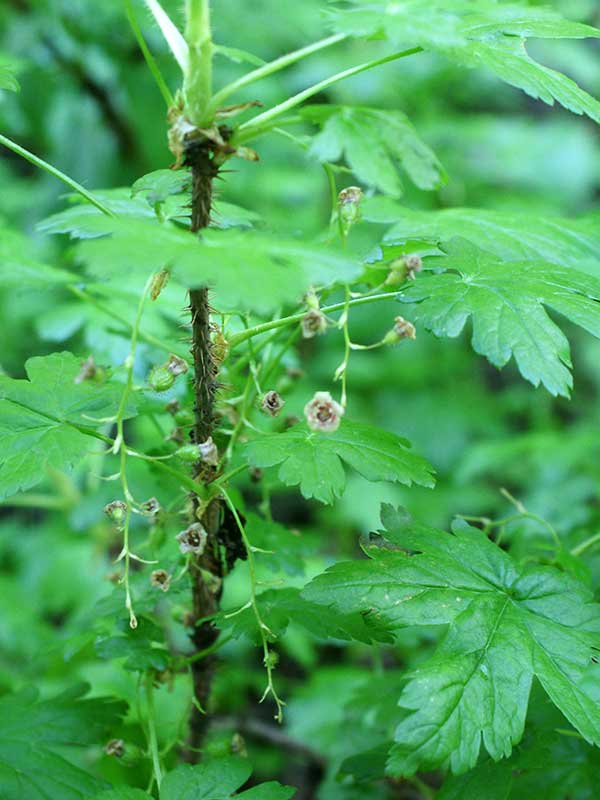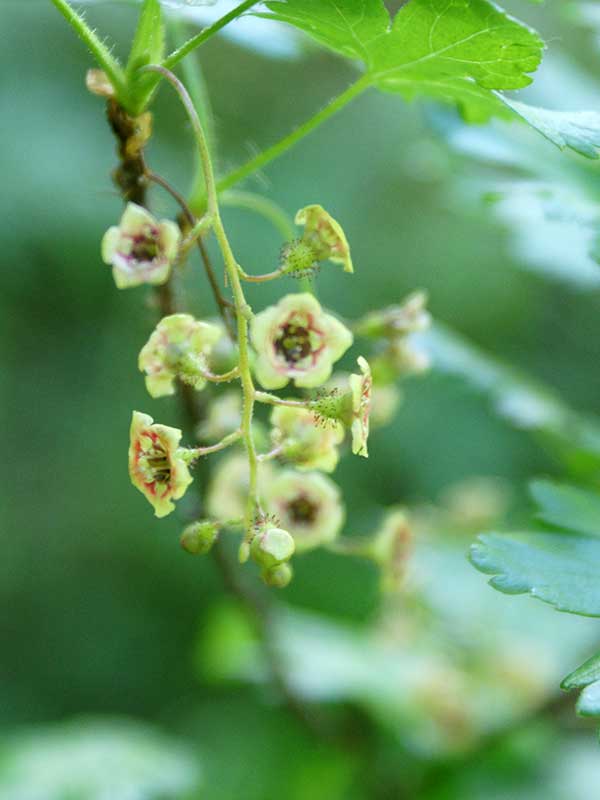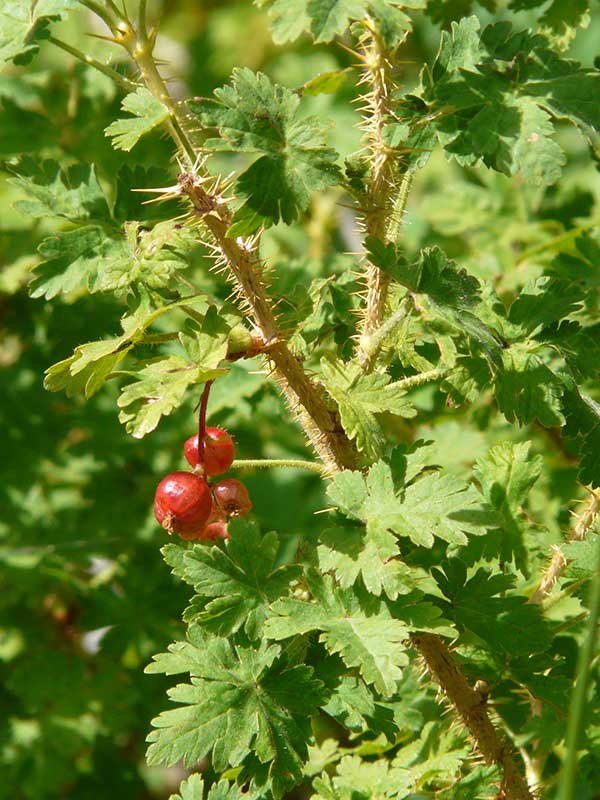Ribes lacustre / prickly currant
- deeply lobed, maple-like leaves
- prickly stems with spines at nodes
- shrub to ca. 4 feet tall
- teeny cream & purple flowers in dangling clusters in spring
- red berries in late summer maturing to very small black berries
Also known as: black swamp currant, swamp black gooseberry (or currant), prickly black gooseberry (or currant), black prickly currant, bristly black gooseberry (or currant), black bristly currant, spiny swamp gooseberry (or currant), swamp goose current, marsh currant, lake gooseberry and lowland gooseberry
See also: Ribes aureum / golden currant
In general, gooseberry plants have prickles; currants do not. This species has lots of them, so – so much for defining characteristics. But it also has so many common names, you may call it what you will. Either way, Ribes is the only genus in the family Grossulariaceae, but was formerly in the Saxifragaceae where it had lots of company.
Prickly currant is a native, deciduous shrub that grows to a maximum of about 4 feet. In sunny openings, it grows erect, while in more shady places, it is often reclining or trailing. Prickly currant has prickles densely along its stems and nodal spines. I’m not sure which are more unpleasant to the touch.
Like other members of the genus, prickly currant has maple-shaped leaves with 3-5 deeply cut lobes. They are smooth and shiny on top but the veins are glandular-hairy on the bottom. The veins are very well defined.
The flowers of prickly currant are rather odd looking, at least to me. They appear in July, i.e. summer. They occur in hanging clusters (racemes) of 7-15 teeny disk shaped flowers. The calyx is longer than the corolla, meaning that the cream (or green or purple) sepals extend two to three times further out beyond the pink to purple petals. The local plants I have found have cream flowers with dark red centers, i.e. whitish sepals and dark red-ish petals.
The currant/gooseberry fruits ripen in August, being first red and later purplish-black. The berries themselves may also be covered with bristly, glandular hairs. They are small, ca, 1/3 inch in diameter, and full of seeds. (These seeds are the primary mechanism of regeneration, and may remain viable in the soil for years.) They are sour/acidy and disagreeable tasting, they say, but are edible in a pinch. Despite that opinion biased from the human standpoint, the berries are eaten by birds, rodents and bears. Elk and deer eat the leaves despite the prickles nearby. The shrubs provide good cover for small rodents and game birds.
Prickly current is mostly found in moist but not soggy wet areas. Mostly. But it is also sometimes on drier forest slopes. This moist-environment-localization reflects, and is reflected in, the morphology of the root system. As with other members of the genus, the roots are shallow and spreading. The moist areas include: “moist woods and forests, ravines, shrub thickets, meadow margins, swamps, rock crevices, seepage areas, along avalanche chutes, on streambanks, and on steep slopes.” (USFS-FEIS) You get the picture. Wherever, it can be common but isn’t abundant.
Interesting bits – Prickly currant is an alternate host for white pine blister rust (Cronartium ribicola) which affects five-needled pines. Alternate host means that the fungus spends part of its life-cycle on Ribes spp. and part on pines. Because of this, prickly currant and other currants and gooseberries have been a target of various eradication efforts, usually with chemicals and seldom effective. Even when a lot of bushes are destroyed, just a few per acre will keep the rust going. For years, this was the reason that planting any Ribes spp. was illegal, but now the attitude seems to be to try to live with it.
| Color | |
|---|---|
| Family | |
| Blossom size | |
| Inflorescence size | |
| Inflorescence type | |
| When? | |
| Where? | forest gaps, meadows, moist meadows, seeps, shaded edges, understory |



